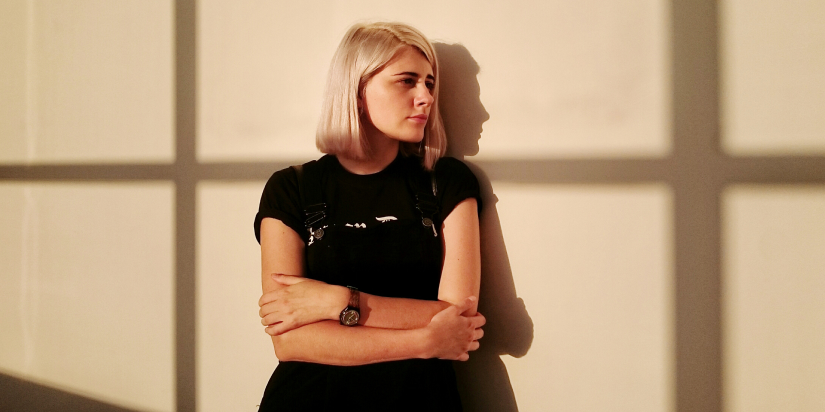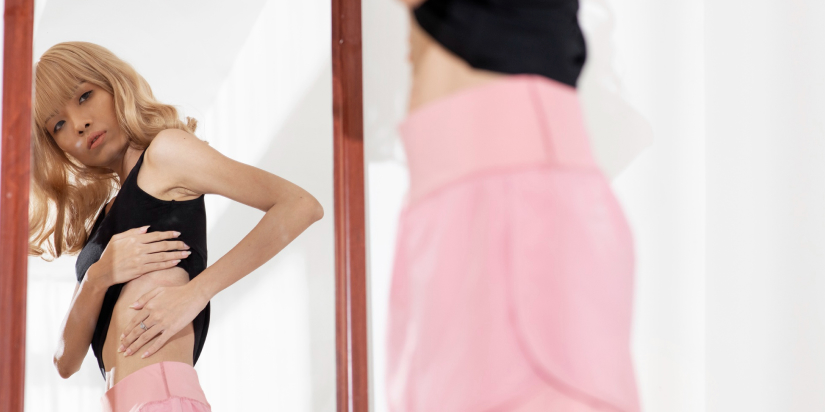The flash of cameras, the roar of applause, the breathtaking couture, and the globetrotting lifestyle—this is the dream of modelling as a career sold to millions. The fashion industry has perfected creating an image of effortless glamour and unattainable beauty. From magazine covers to Parisian runways, models appear as ethereal beings, living a life many aspiring models yearn for. At Dazzlerr, while we celebrate the artistry and creativity of fashion, it is also our responsibility to provide a complete picture that looks beyond the spotlight and into the shadows. The reality of professional modelling is often a stark contrast to its public perception. Beneath the veneer of perfection lies a world fraught with intense pressure, instability, and significant personal sacrifice. Understanding the dark side of modelling is not about discouraging dreams; it’s about equipping those who dare to dream with the knowledge and awareness needed to navigate a complex and demanding profession. This is an exploration of the significant modelling industry challenges that are rarely discussed but are fundamentally part of the experience for many.
The Unseen Pressures: The Mental and Emotional Toll
Perhaps the most pervasive and damaging aspect of the dark side of modelling is the immense strain it places on mental and emotional well-being. This is a profession built on aesthetics, where one’s physical form is the primary commodity, leading to a unique and relentless set of psychological hurdles.
The Constant Scrutiny and Body Image Pressure
From the very first casting call, a model’s body is subjected to intense scrutiny. It is measured, photographed, and judged against exacting and often unrealistic standards. This constant evaluation can lead to severe body image pressure, fostering a critical and often unhealthy relationship with one’s own appearance. Models are frequently told they are “too big,” “too short,” or that a specific feature is not “in” this season. This objectification can erode self-esteem and lead to a state of perpetual anxiety about one’s physical self. The pressure to maintain specific, often dangerously low, measurements for high-fashion modelling can push individuals towards disordered eating patterns and other harmful behaviours in a desperate attempt to fit an ever-changing, arbitrary ideal. This critical aspect of the industry is a major contributor to the challenges concerning mental health in modelling.
The Relentless Cycle of Rejection and Validation
A core part of modelling as a career is rejection. For every “yes” that leads to a campaign or a runway show, there are hundreds, if not thousands, of “no’s.” Models attend countless castings, often waiting in line for hours only to be dismissed in seconds. This constant cycle of being judged and rejected can be emotionally devastating. It can lead to feelings of inadequacy, self-doubt, and a desperate need for external validation. When self-worth becomes tied to whether an agent or a client approves of your look, it creates a fragile emotional state. This environment makes it incredibly difficult to build resilient self-esteem, as one’s professional value feels entirely dependent on the subjective opinions of others.
Loneliness, Isolation, and a Competitive Landscape
The lifestyle of a successful model often involves constant travel, moving from one fashion capital to another. While this sounds exciting, it can be an incredibly lonely existence. Models, often in their late teens, find themselves in foreign cities, far from their families, friends, and support systems. They live in “model apartments” with other transient individuals, where friendships can be fleeting and competition is always simmering beneath the surface. The very nature of the job is competitive; the model standing next to you is vying for the same limited spots. This can create an atmosphere of isolation where genuine, supportive relationships are hard to find, further impacting mental health in modelling.
The Physical Demands and Health Risks of the Profession
Beyond the mental toll, the physical demands of professional modelling are immense and often detrimental to long-term health. The job requires a level of physical endurance and a willingness to push one’s body to its limits, which is one of the most significant modelling career risks.
Grueling Schedules and Physical Exhaustion
The life of a working model is not one of leisure. During fashion weeks, for example, a model might have over a dozen shows, with early morning call times for hair and makeup and late-night fittings. This leaves little time for rest or proper nutrition. Photoshoots can be equally demanding, requiring models to hold difficult poses for hours, sometimes in extreme weather conditions—wearing winter coats in the summer heat or swimwear in the freezing cold. This relentless pace leads to chronic exhaustion and burnout, weakening the immune system and making individuals more susceptible to illness.
The Pressure to Maintain an “Ideal” Physique
The intense body image pressure has severe physical consequences. To meet the stringent size requirements, particularly in high-fashion modelling, many models adopt extreme dieting and exercise regimens. This can lead to malnutrition, metabolic damage, hair loss, and the disruption of vital bodily functions. The long-term health consequences of maintaining an unnaturally low body weight can be severe, including osteoporosis and fertility issues. This aspect of the dark side of modelling highlights a systemic issue where the health of individuals is often considered secondary to achieving a specific aesthetic for the clothes.
Financial Instability and Widespread Exploitation
One of the biggest myths about modelling as a career is that it leads to instant wealth. The reality for the vast majority of models is a state of precarious finances and vulnerability to exploitation. The issue of financial instability models face is a systemic problem that traps many in cycles of debt.
The Myth of the Big Paycheck and Inconsistent Income
While top supermodels earn millions, they are the 1% of the industry. Most working models earn an inconsistent and unpredictable income. A model might have a lucrative month followed by several months with no work at all. Furthermore, payment is rarely immediate. It can take months, sometimes over a year, for a model to receive payment for a job after the agency takes its significant commission and deducts expenses. This lack of a steady income makes financial planning nearly impossible and creates constant anxiety about paying bills and covering living expenses.
Model Debt and Predatory Agency Practices
Many aspiring models begin their careers not by earning money, but by accumulating debt. Reputable agencies often operate by advancing money to the model for their start-up costs. This includes the cost of developing a portfolio (test shoots), comp cards, and even rent for a shared model apartment and flights to fashion capitals. This entire amount is an advance that the model must pay back to the agency from their future earnings. This system means a new model can be thousands of dollars in debt before they book their first paid job. This is a primary form of model exploitation, as it creates a power imbalance where the model is financially bound to the agency, making it difficult to leave or complain about unfair treatment.
Scams Targeting Aspiring Models
The desire for a career in the fashion industry makes many hopefuls vulnerable to scams. Predatory “agencies” or “scouts” often charge exorbitant fees for subpar photos, useless classes, or placement on a website that yields no work. They prey on the dreams of individuals and their families, promising a shortcut to fame while offering nothing of value. This is a dangerous facet of the industry that underscores the need for thorough research and caution.
A Glaring Lack of Safety and Security
The unregulated nature of the industry and the youth of many of its participants create significant modelling career risks related to personal safety. Ensuring model safety has historically not been a priority, leaving many vulnerable in high-risk situations.
Navigating Unsafe and Unregulated Environments
Models are often required to work with a constantly changing roster of photographers, stylists, and clients in private studios or on remote locations. This lack of a consistent, regulated workplace environment can be dangerous. Young models, eager to please and afraid of being labeled “difficult,” may find themselves in uncomfortable or unsafe situations without a clear protocol for seeking help. The power dynamics are skewed, with established industry figures holding immense power over a model’s career prospects, making it incredibly difficult to report inappropriate behaviour.
The Pervasiveness of Harassment and Misconduct
The fashion industry has had a long-overdue reckoning with issues of harassment and misconduct. For decades, the lack of oversight and accountability allowed predatory behaviour to go unchecked. While movements and organizations are now working to improve model safety and create protective standards, it remains a significant concern. The vulnerability inherent in the job—where one’s body is on display—can be exploited. This remains one of the most serious examples of model exploitation and a dark reality that the industry is still working to overcome.
The Fleeting Nature of a Modelling Career
Even for those who achieve a measure of success, a career in modelling is often brutally short. The industry’s obsession with youth and novelty means that a model’s time in the spotlight can be incredibly brief, leading to yet another set of modelling industry challenges.
The Industry’s Obsession with Youth and Ageism
The fashion industry is notoriously ageist. While there has been a recent push for more diversity in age, the vast majority of models, particularly women, find their careers slowing down dramatically by their mid-twenties. A model can be considered “old” at an age when professionals in other fields are just beginning their careers. This creates immense pressure to “make it” quickly and leaves many feeling lost and without a clear career path when the bookings stop coming in.
The “Disposable” Nature of Models
Trends in fashion are not just about clothes; they are also about “looks.” A face that is in high demand one season can be considered “out” the next. This disposable nature of talent means there is very little job security. Models are often treated as interchangeable human mannequins rather than individuals with lasting talent. This can be emotionally crushing, as a career one has dedicated their life to can vanish almost overnight, reinforcing the profound financial instability models often experience throughout their careers.
Building Resilience: Navigating the Challenges of the Industry
The Critical Importance of a Support System
Having a strong support system of family and trusted friends outside the industry is crucial. These are the people who provide unconditional support and keep an individual grounded in a world of superficiality and judgment. This network is a vital buffer against the emotional toll of rejection and loneliness.
Choosing a Reputable Agency
Thoroughly researching and choosing a legitimate, reputable agency is the single most important step for any aspiring model. Reputable agencies do not charge upfront fees for representation. They invest in their models and earn money by taking a commission from the jobs they book. Speaking to other models at the agency and understanding their contract fully is essential.
Prioritizing Mental and Physical Health
Proactively caring for one’s well-being is non-negotiable. This means seeking professional help, such as therapy, to cope with the immense pressures and maintain positive mental health in modelling. It also means rejecting harmful diet culture, learning about nutrition, and finding a healthy relationship with exercise that is about strength and well-being, not just size.
Financial Literacy and Planning for the Future
Models must be business-minded. Understanding contracts, saving money diligently during good months, and planning for a career after modelling are essential. The unstable nature of the income requires careful financial management to avoid the pitfalls of debt.
Conclusion: A Realistic Perspective on a Dream Career
The world of modelling is a paradox. It is an industry that creates immense beauty and art, yet it can also be a source of significant pain and difficulty for those within it. The modelling industry challenges are real, systemic, and deeply ingrained. From the psychological burden of constant judgment and body image pressure to the realities of financial instability and the risks of exploitation, the path is far from easy. However, awareness is power. By understanding the dark side of modelling, aspiring models, their families, and the industry itself can work towards creating a safer, healthier, and more transparent environment. A successful career should not have to come at the cost of one’s physical or mental health. The dream of modelling is beautiful, but a realistic, informed, and resilient approach is the only way to navigate its shadows and truly find a lasting place in the light.














